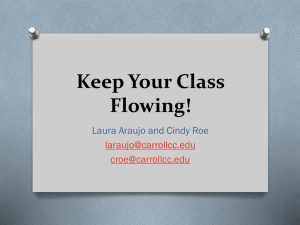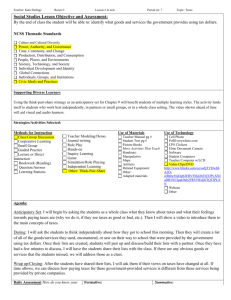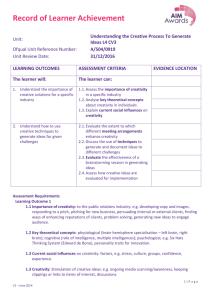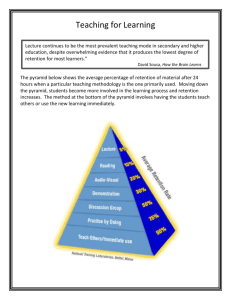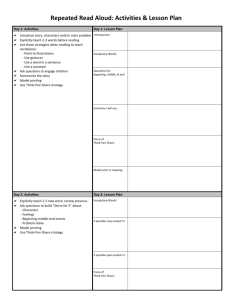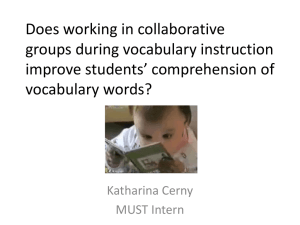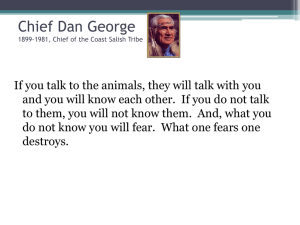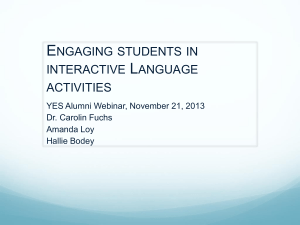SaiKungEnglishsharing6July2012
advertisement
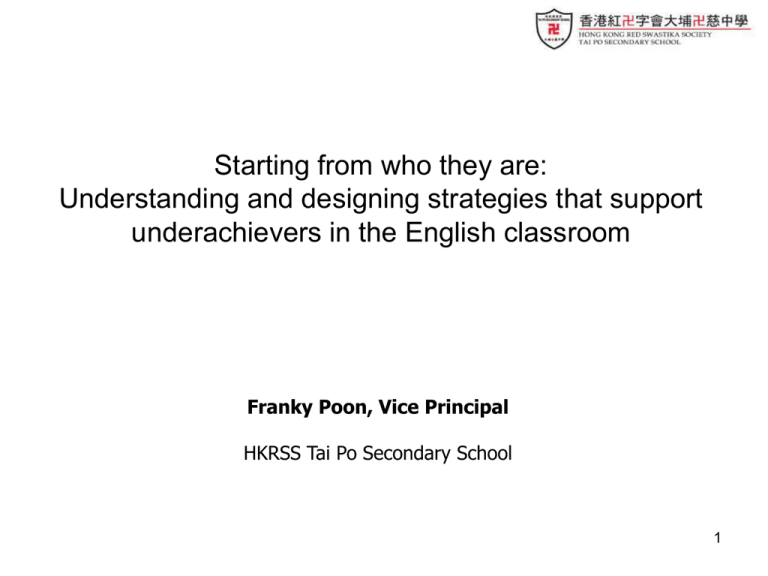
Starting from who they are: Understanding and designing strategies that support underachievers in the English classroom Franky Poon, Vice Principal HKRSS Tai Po Secondary School 1 Objectives • To introduce some diagnostic tools to assess students’ language awareness and readiness levels • To suggest strategies which support diverse learning needs in an inclusive classroom Understanding students’ needs 1. 2. 3. 4. Making no assumptions Starting from where they are Linking assessment to teaching Providing choices Part One: Using some diagnostic tools Letter name / sound High frequency words Blending / Phonogram C A N a n Syllabification Reading comprehension Part Two: Supporting SpLD students in an inclusive setting 1. diagnostic-prescriptive teaching 2. differentiated materials / learning tasks 3. visual cues / graphic organizers 4. multiple representations 5. strategies to promote learner autonomy and peer encouragement 6. task analysis techniques 7. authentic learning activities 8. computer-assisted learning (CAL) 9. student strengths as the starting point 16 Prescriptive Teaching a. Raising phonological awareness in tasks 17 b. Putting sight words in model sentences http://www.hkrsstpss.edu.hk/subject/English/ sightwords.php 18 c. Raising students’ awareness of sight words in texts 19 2. differentiated materials / learning tasks Read the following pages and set three comprehension questions: 1. One for the strongest 2. One for the average 3. One for the weakest 21 Setting questions based on Bloom’s taxonomy Easy or Difficult? 22 Easy or Difficult? 23 Easy or Difficult? 24 3. Use of visual cues / graphic organizers 25 a. Turning a mind map into art 26 27 b. Using mind map in exam 28 Think-Pair-Share (5) Based on this composition, what skills do you think the student has learnt? 29 4. Allowing Multiple Representations 30 31 Multiple representations and Creativity Think-Pair-Share (1) What is creativity? Do you think this piece of student work is creative? Why or why not? Can students with limited language proficiency be creative? What kind of learning tasks can nurture creativity among students? 32 5. Promoting learner autonomy and peer encouragement 33 Think-Pair-Share (2) • Describe what you saw in the video • Which scene impresses you most? Why? 6. Task analysis Step-by-step approach to completing a meaningful task a. Multi-media input 35 b. Vocabulary building through researching on the Internet 36 c. Using a mind map to organize ideas 37 d. Use of Q/A to promote sentence writing 38 e. From sentences to passages (an oral presentation) 39 f. Peer assessment 40 7. Designing authentic learning activities • Sending a post card 41 8. Computer-assisted learning 42 9. Building on Student Strengths Have you ever seen H.W. like this? What would be your response? 43 44 Dictation 45 Short writing(H.W.) 46 Think-pair-share (3) What does the above case tell us? What could be the success factors in motivating students to learn? A question to take away ….. Poon, K.C. & Lin, A (2011) “Creating a School Programme to Cater for Learner Diversity: A Dialog between a School Administrator and an Academic” Social Justice Language Teacher Education, Channel View Publications48 Capitalizing on students’ strengths References 1. Reading a-z http://www.readinga-z.com/ 2. Scholastic Phonics Booster Books 3. Ben Fax Saves the Day, Fast Forward, Thomson Nelson 4. Raz-Kids.com Thank you
